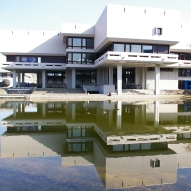Zusammenfassung
About 30% of all Hodgkin lymphoma (HL) patients are >= 60 years old. As lenalidomide has promising single agent activity in multiple relapsed HL, we replaced bleomycin in ABVD with lenalidomide in this phase-I trial. Patients aged >= 60 years with early-unfavourable- or advanced-stage HL (Eastern Cooperative Oncology Group performance status <= 2, Cumulative Illness Rating Scale for Geriatrics ...
Zusammenfassung
About 30% of all Hodgkin lymphoma (HL) patients are >= 60 years old. As lenalidomide has promising single agent activity in multiple relapsed HL, we replaced bleomycin in ABVD with lenalidomide in this phase-I trial. Patients aged >= 60 years with early-unfavourable- or advanced-stage HL (Eastern Cooperative Oncology Group performance status <= 2, Cumulative Illness Rating Scale for Geriatrics score 0-7) received 4-8 cycles of AVD (doxorubicin, vinblastine, dacarbazine) and lenalidomide in escalation with overdose control. Dose-limiting toxicities (DLTs) included thromboembolism >= grade 2, severe haematological toxicity, neutropenic fever and prolonged therapy delay. Twenty-five patients with a median age of 68 years were included, 68% had advanced-stage HL. A pre-defined stopping criterion for dose escalation after DLT evaluation of 20/24 patients suggested a recommended phase II dose (RPTD) of 20 mg. DLTs occurred in 10/24 evaluable patients, all treated with >= 20 mg, however, median relative dose intensity was 97% (interquartile range 49-104%). Grade 3 or higher toxicities occurred in all 22 patients at >= 20 mg lenalidomide but no treatment-related deaths occurred. Overall response rate was 80% for all patients (20/25) and 86% (19/22) at >= 20 mg lenalidomide. Three-year estimates for progression-free survival and OS were 69 center dot 7% (95% CI: 50 center dot 3-89 center dot 1%) and 83 center dot 8% (95%-CI: 69 center dot 3-98 center dot 4%), respectively. In conclusion, AVD with lenalidomide 20 mg is feasible and highly effective in older HL patients.





 Altmetric
Altmetric